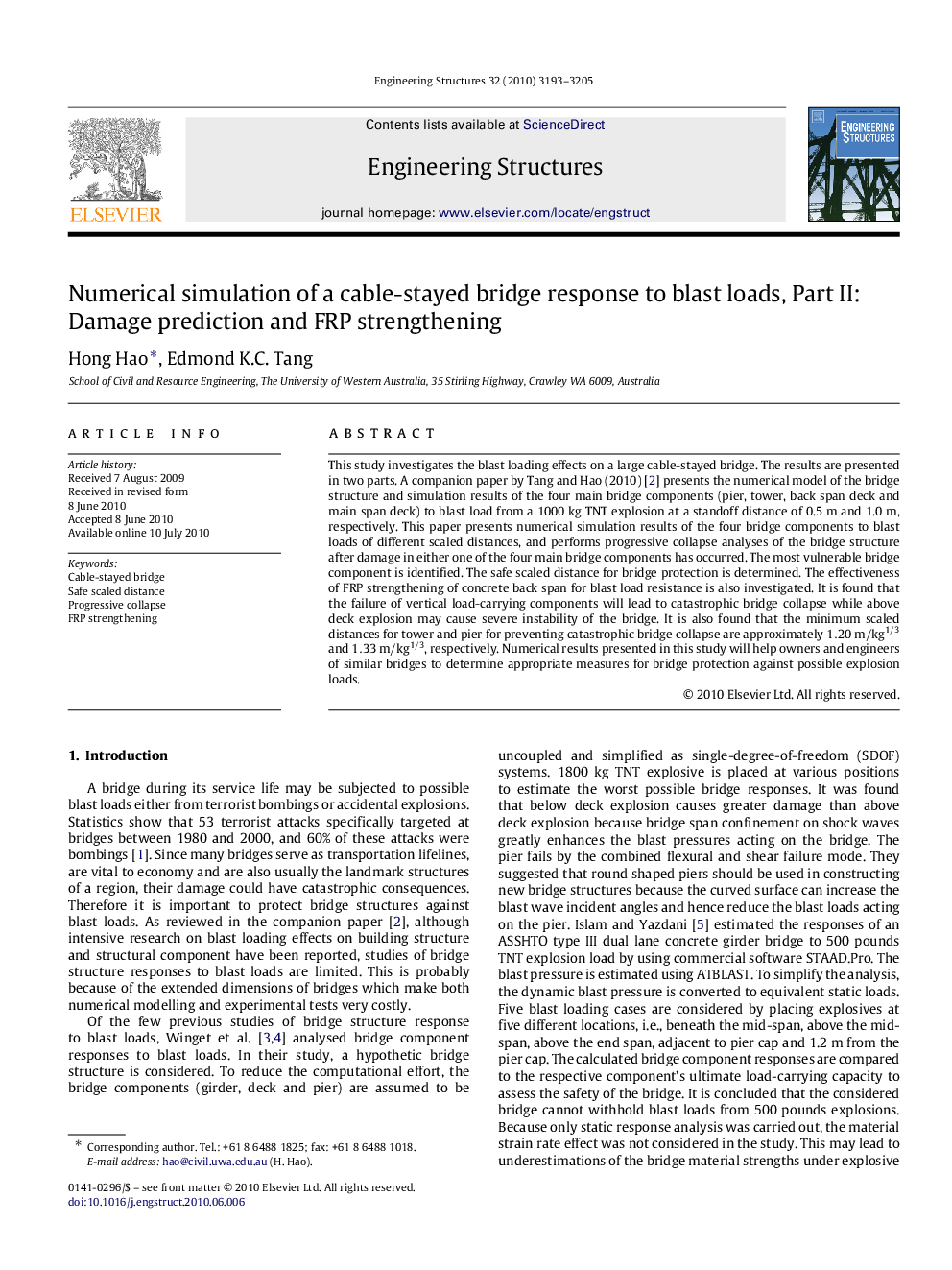| Article ID | Journal | Published Year | Pages | File Type |
|---|---|---|---|---|
| 268102 | Engineering Structures | 2010 | 13 Pages |
This study investigates the blast loading effects on a large cable-stayed bridge. The results are presented in two parts. A companion paper by Tang and Hao (2010) [2] presents the numerical model of the bridge structure and simulation results of the four main bridge components (pier, tower, back span deck and main span deck) to blast load from a 1000 kg TNT explosion at a standoff distance of 0.5 m and 1.0 m, respectively. This paper presents numerical simulation results of the four bridge components to blast loads of different scaled distances, and performs progressive collapse analyses of the bridge structure after damage in either one of the four main bridge components has occurred. The most vulnerable bridge component is identified. The safe scaled distance for bridge protection is determined. The effectiveness of FRP strengthening of concrete back span for blast load resistance is also investigated. It is found that the failure of vertical load-carrying components will lead to catastrophic bridge collapse while above deck explosion may cause severe instability of the bridge. It is also found that the minimum scaled distances for tower and pier for preventing catastrophic bridge collapse are approximately 1.20m/kg1/3 and 1.33m/kg1/3, respectively. Numerical results presented in this study will help owners and engineers of similar bridges to determine appropriate measures for bridge protection against possible explosion loads.
